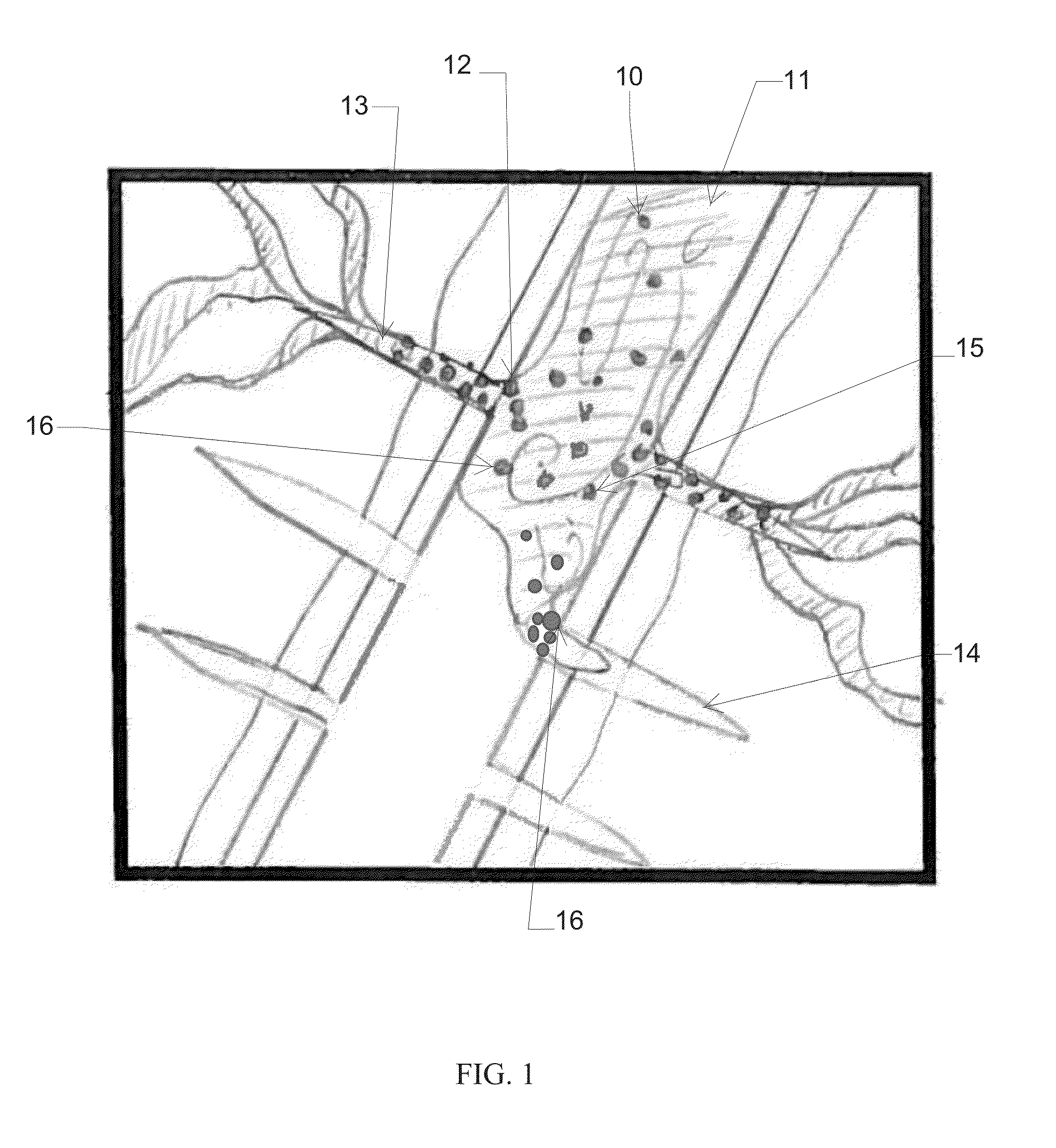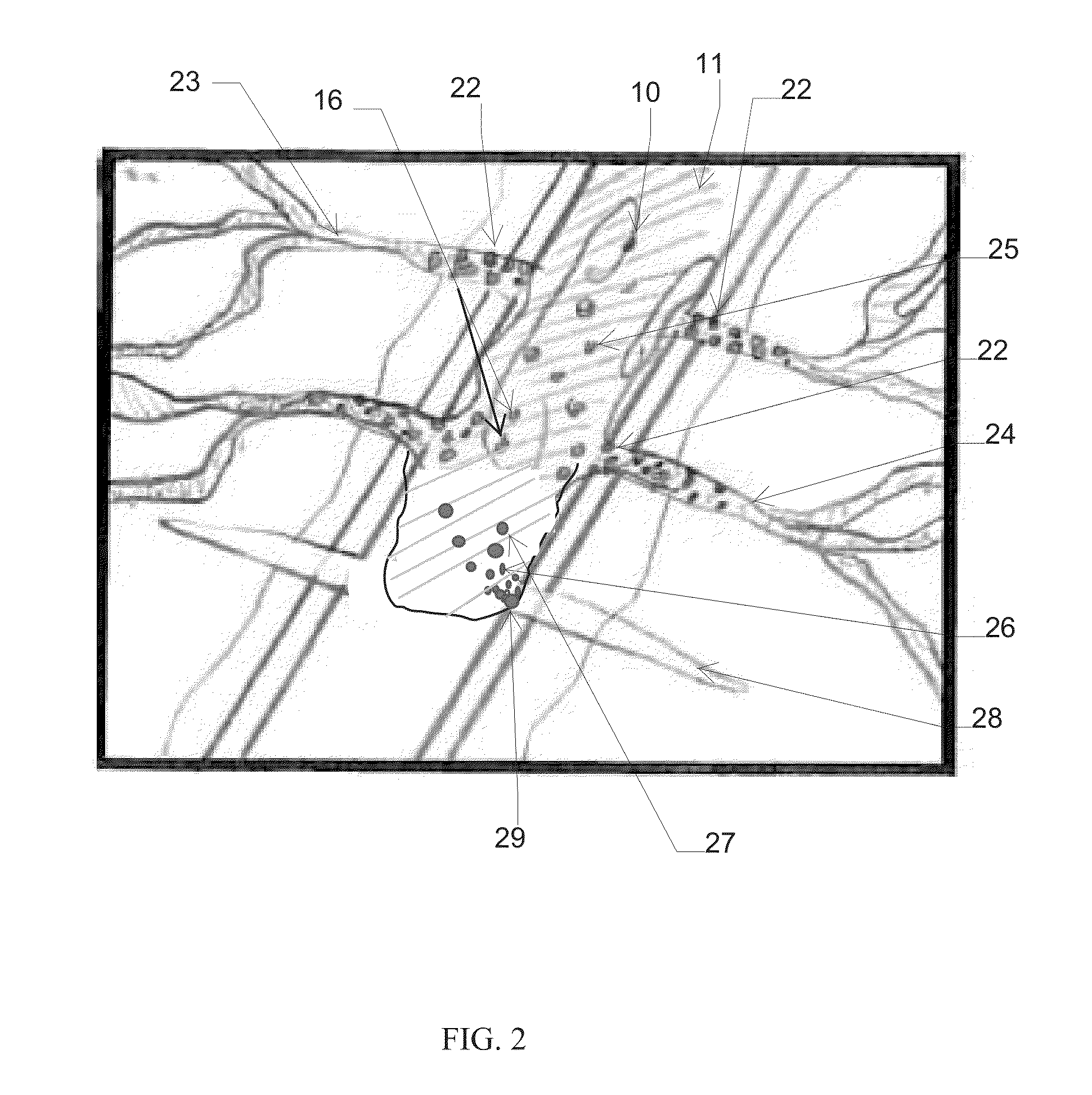Method for improving isolation of flow to completed perforated intervals
a technology of perforated intervals and flow isolation, which is applied in the direction of fluid removal, wellbore/well accessories, chemistry apparatus and processes, etc., can solve the problems of difficult construction of sand plugs within horizontal wellbores, time-consuming and expensive use of tubing, and ineffective methods. , to achieve the effect of less surface operating area, less space and less tim
- Summary
- Abstract
- Description
- Claims
- Application Information
AI Technical Summary
Benefits of technology
Problems solved by technology
Method used
Image
Examples
example 1
[0120]A well treating composite having a deformable core particulate and a hardened coating was prepared using, as particulate, LiteProp™ 125, commercially available from Baker Hughes Incorporated, by spraying and drying onto the particulate in sequential steps: (1) 10 lb / Mgal sodium carbonate, (2) 2 lb / gal sodium tetraborate and (3) 40 lb / Mgal guar. The process used a fluid bed coating apparatus having a Glatt coater wherein warm air was blown through the perforated plates below the bed of particulates. The apparatus was operated about at 120° F. to facilitate driving off the water. At times, there was a relatively short period following each spray while the bed was continuing to be fluidized in order to complete drying of a particular stage. A volume of a base fluid (250 ml of 2% KCl) was measured in a beaker and added to a variable speed Waring blender. The desired mass of the untreated particulate and coated particulate was measured using a balance. The Waring blender was turned...
example 2
[0123]Phthalic anhydride (obtained from a commercial supplier) and Sample A (8 g of each) were first diluted in 100 mL deionized water or HCl 15% for 20 hours at 180° F., and then left for 3 hours at room temperature. The mixture was vacuum filtrated with 100 mL water and dried for 24 hours at 160° F. The results are set forth in Table I.
TABLE IMeltingDissolvedRange2,Sample(%)° F.SolventCommercial Phthalic Anhydride6403Deionized waterSample A7.5401Deionized waterSample A, crushed4397-399Deionized waterCommercial Phthalic Anhydride4412HCl 15%Sample A0410HCl 15%Sample A, crushed16415HCl 15%
FTIR and melting point of the recovered undissolved samples showed that the remaining phthalic anhydride had converted into phthalic acid.
example 3
[0124]Samples of Sample A (each 5 g) were diluted in 100 mL of either deionized water (DI) or tap water for (1) 54 hours at 180° F. and (2) 64 hours at 140° F. and then left to cool at room temperature. The solids were vacuum filtrated with 100 mL water and dried for 24 h at 160° F. The results are set forth in Table II.
TABLE II64 hr PERCENT54 hr PERCENTSOLUBILITY @SOLUBILITY @140° F.180° F.taptapwaterDIwaterDI18.513.45.69.3
The FTIR and melting point of the recovered undissolved samples showed that the remaining phthalic anhydride had converted into phthalic acid. Table II illustrates that more phthalic anhydride was converted to phthalic acid at higher temperatures. Sample A was thus more suitable for lower temperature applications.
PUM
| Property | Measurement | Unit |
|---|---|---|
| viscosity | aaaaa | aaaaa |
| particle size | aaaaa | aaaaa |
| temperatures | aaaaa | aaaaa |
Abstract
Description
Claims
Application Information
 Login to View More
Login to View More - R&D
- Intellectual Property
- Life Sciences
- Materials
- Tech Scout
- Unparalleled Data Quality
- Higher Quality Content
- 60% Fewer Hallucinations
Browse by: Latest US Patents, China's latest patents, Technical Efficacy Thesaurus, Application Domain, Technology Topic, Popular Technical Reports.
© 2025 PatSnap. All rights reserved.Legal|Privacy policy|Modern Slavery Act Transparency Statement|Sitemap|About US| Contact US: help@patsnap.com



